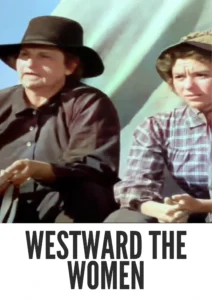
Experience the groundbreaking Western that revolutionized the genre through a stunning colorized presentation. “Westward the Women” stands as a remarkable pioneer tale that broke traditional Western conventions by focusing on the extraordinary journey of 140 women who braved the treacherous frontier to find new lives and love2.Plot and Historical Significance
Set against the backdrop of 1851, this compelling narrative follows rugged wagon master Buck Wyatt (Robert Taylor) who leads a dangerous expedition of mail-order brides across 2,000 miles of harsh terrain from Chicago to California. The journey transforms these determined women into frontier survivors, challenging period stereotypes while delivering an authentic portrayal of Western expansion.
Technical Excellence
Our meticulous colorization process enhances William Mellor’s masterful black-and-white cinematography while preserving the film’s artistic integrity3. The restoration brings new vibrancy to the sweeping vistas and intimate character moments without compromising the original cinematographic intentions4.Cast and Production
- Robert Taylor as Buck Wyatt
- Denise Darcel as Fifi Danon
- Hope Emerson as Patience Hawley
Directed by William A. Wellman, the film showcases his signature blend of gritty realism and emotional depth2.
Special Features
- Professionally colorized in full HD resolution
- Original theatrical aspect ratio preserved
- Enhanced audio quality
- Chapter selection for easy navigation
- Digital download in multiple formats for various devices
Historical Context
This groundbreaking film challenged Western genre conventions by presenting strong female characters and addressing serious themes of survival, determination, and community building. The story draws inspiration from actual historical events of pioneer women who helped settle the American West.
Check The Full Colorized Movies List
Check Our YouTube Channel
Check Our Colorized Movies Trailer Channel

